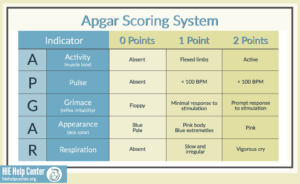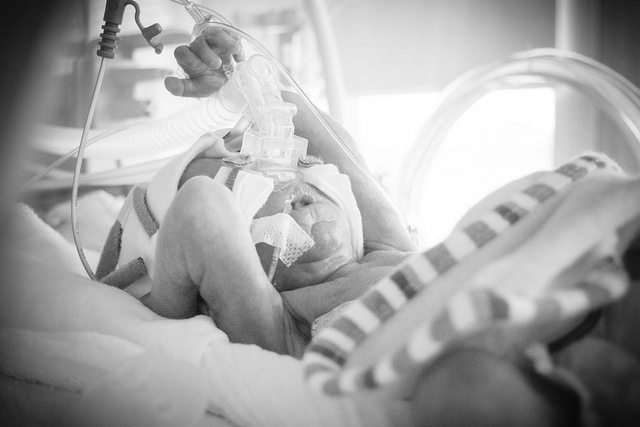The importance of early detection
Medical professionals should evaluate babies for hypoxic-ischemic encephalopathy (HIE) if there are labor and delivery complications or signs of fetal distress during the birthing process, as well as if newborns exhibit certain early signs of brain injury. Prompt assessment is critical because if identified very quickly, HIE can be treated with therapeutic hypothermia. This can prevent or minimize permanent damage, but it must be administered very shortly after birth in order to be effective (most current guidelines say within six hours, although recent research indicates that this window might be a bit longer than was previously thought).
How to identify HIE: signs & symptoms
Babies who experienced oxygen-depriving conditions in utero, during the birthing process, or shortly after birth should always be tested for HIE. Sometimes, a newborn may appear healthy even if they have sustained a birth injury. However, in many cases, babies will exhibit some of the following signs and symptoms of HIE:
- Breathing problems
- Trouble feeding (difficulty latching on, sucking, or swallowing)
- Low muscle tone (the baby is floppy or limp)
- Abnormal consciousness or coma
- Abnormal responses to light
- Seizures: Please note that infant seizures can be subtle and difficult to recognize. If you think that your child is currently having or has recently had a seizure for the first time, please call 911 or your country’s emergency number for immediate medical attention.
Tests and evaluations for HIE
The APGAR score: This is a tool used to assess a newborn’s overall health. Low APGAR scores can be indicative of HIE and other health concerns. APGAR is an acronym that stands for:
- Appearance: Does the baby’s skin tone look blue or pale?
- Pulse: Does the baby have a normal heart rate?
- Grimace (reflex irritability): How does the baby respond to stimulation?
- Activity: Does the baby have joint movement, the ability to flex, etc.?
- Respiratory effort: Is the baby breathing/crying?

Brain imaging: Brain imaging involves technologies such as MRIs, CT scans, and ultrasound, which can be used to take pictures of a baby’s brain and identify whether there is an injury due to oxygen deprivation. MRIs are the preferred method of infant brain scanning to diagnose HIE.
Umbilical cord blood gas tests: Immediately after birth, especially if there were complications or the mother had a high-risk pregnancy, physicians should collect a sample of the umbilical cord blood. This can help determine whether a baby experienced fetal distress (that is, was deprived of oxygen for a period of time). Babies with HIE may have an unusually low pH in their cord blood.
EEGs: Because seizures are a very common sign of HIE, electroencephalogram (EEG) can be used to detect abnormal activity in the brain. The presence of seizures is not a sure indication that a baby has HIE, but the two conditions often co-occur. Neonatal seizures should also be promptly treated, because they can worsen existing brain damage.
Detecting developmental delays in children with HIE
As previously discussed, early identification of HIE is extremely important because it provides the opportunity for a baby to get therapeutic hypothermia. However, in many cases, HIE is not detected until months or years after birth, when the baby begins to miss developmental milestones such as playing, smiling, crawling, or talking. They may also begin to show signs of conditions that are commonly associated with HIE, such as cerebral palsy and intellectual disabilities.
About the HIE Help Center and ABC Law Centers
The HIE Help Center is run by ABC Law Centers, a medical malpractice firm exclusively handling cases involving HIE and other birth injuries. Our lawyers have over 100 years of combined experience with this type of law, and have been advocating for children with HIE and related disabilities since the firm’s inception in 1997.
We are passionate about helping families obtain the compensation necessary to cover their extensive medical bills, loss of wages (if one or both parents have to miss work in order to care for their child), assistive technology, and other necessities.
If you suspect your child’s HIE may have been caused by medical negligence, please contact us today to learn more about pursuing a case. We provide free legal consultations, during which we will inform you of your legal options and answer any questions you have. Moreover, you would pay nothing throughout the entire legal process unless we obtain a favorable settlement.
You are also welcome to reach out to us with inquiries that are not related to malpractice. We cannot provide individualized medical advice, but we’re happy to track down informational resources for you.


